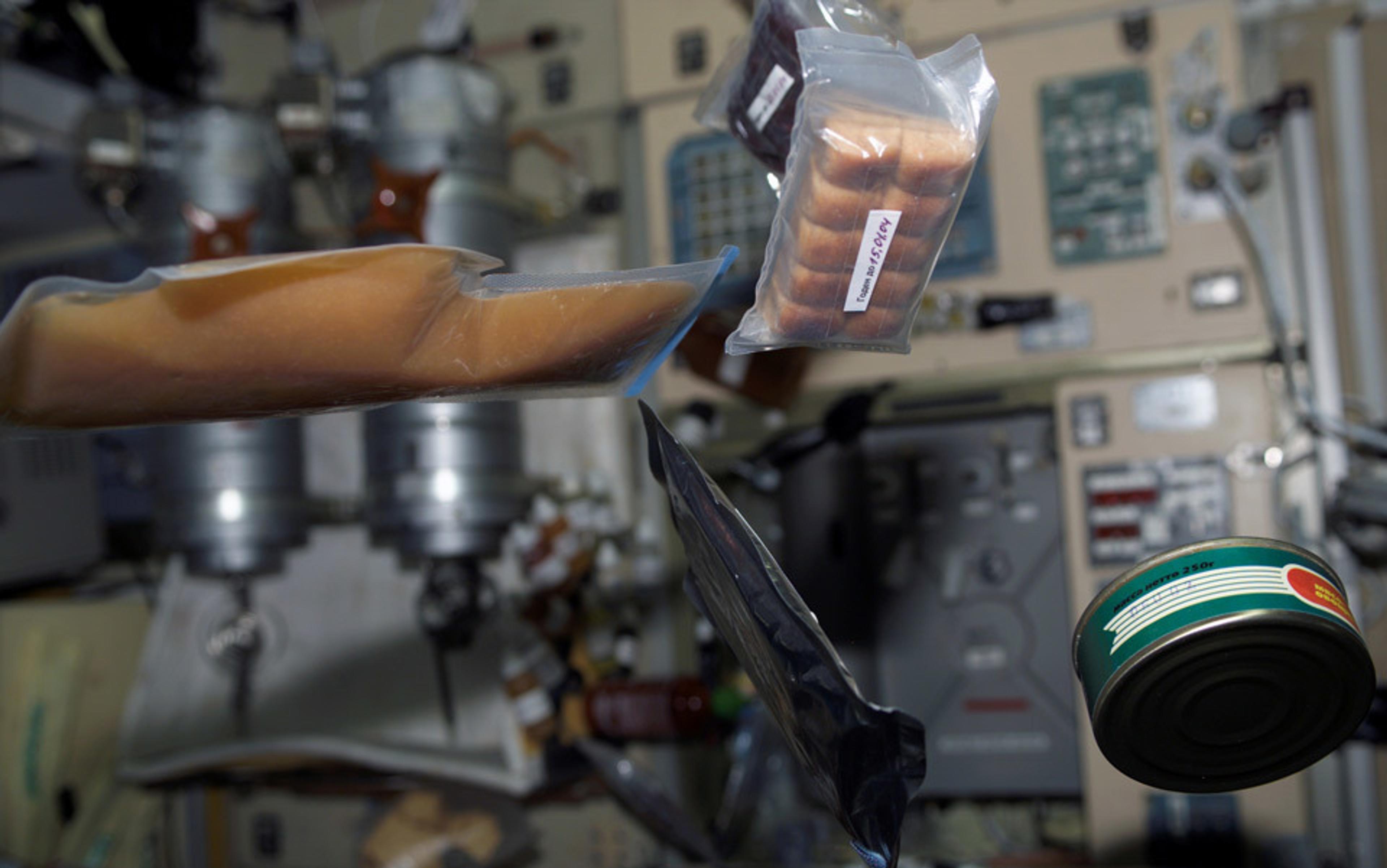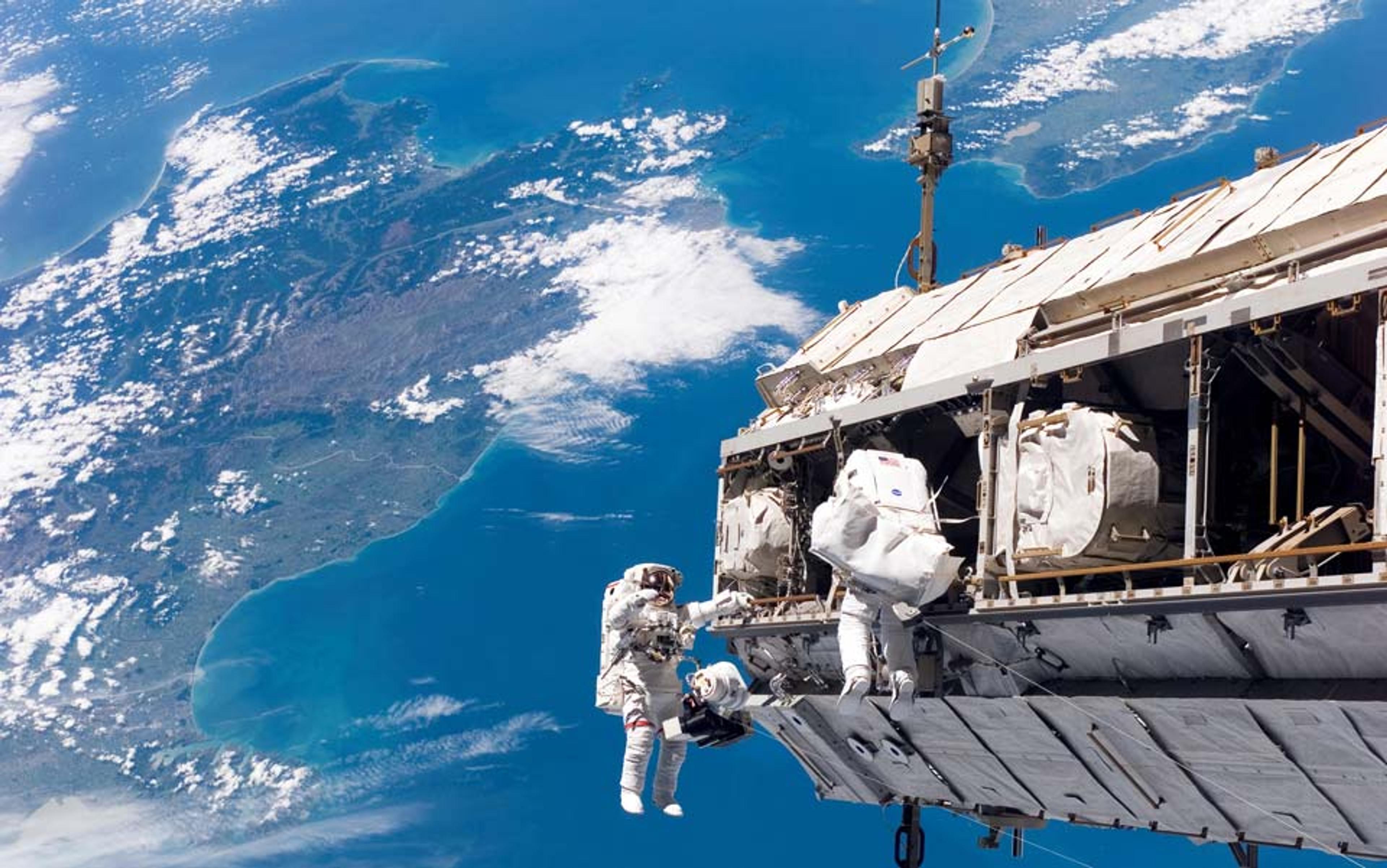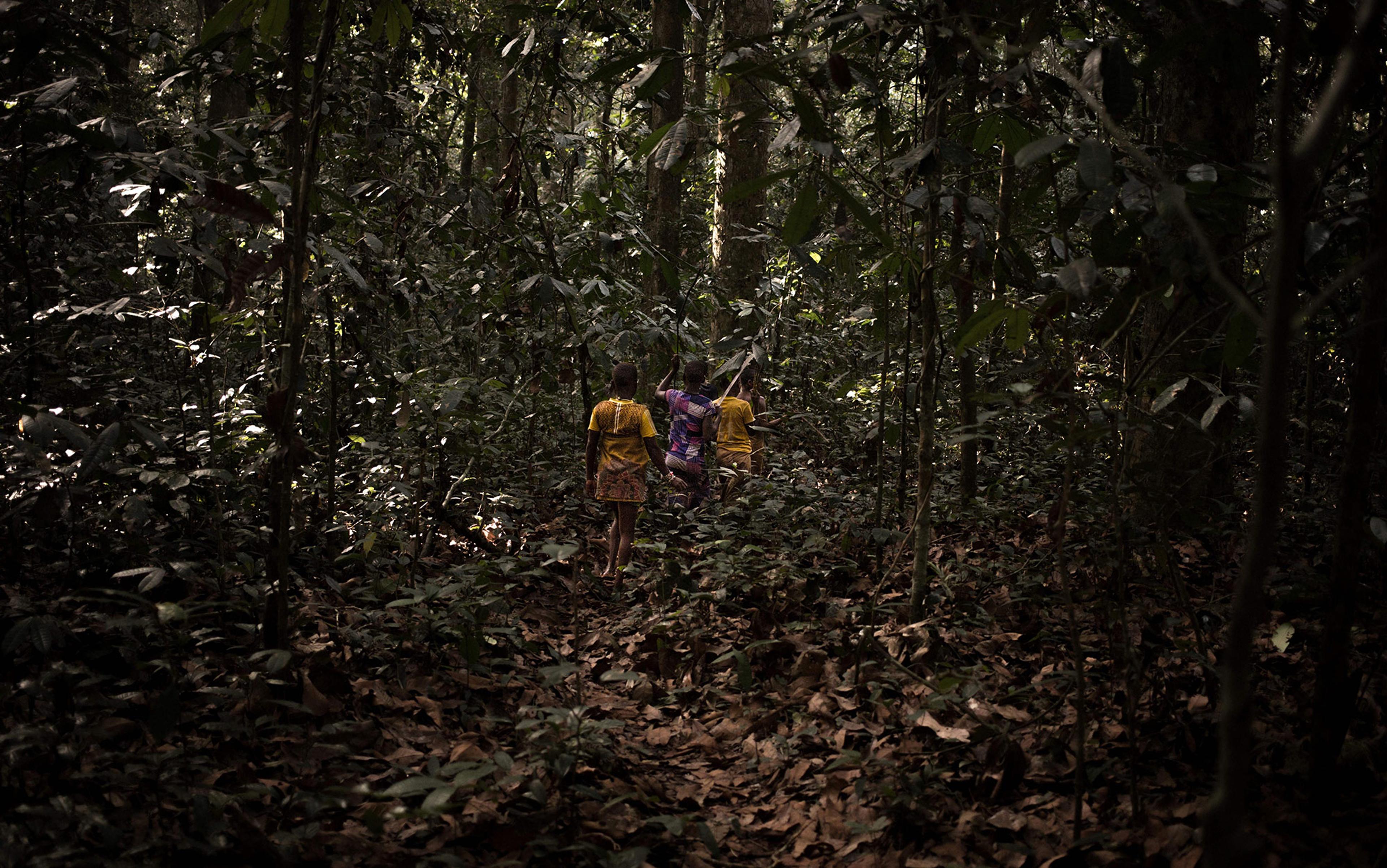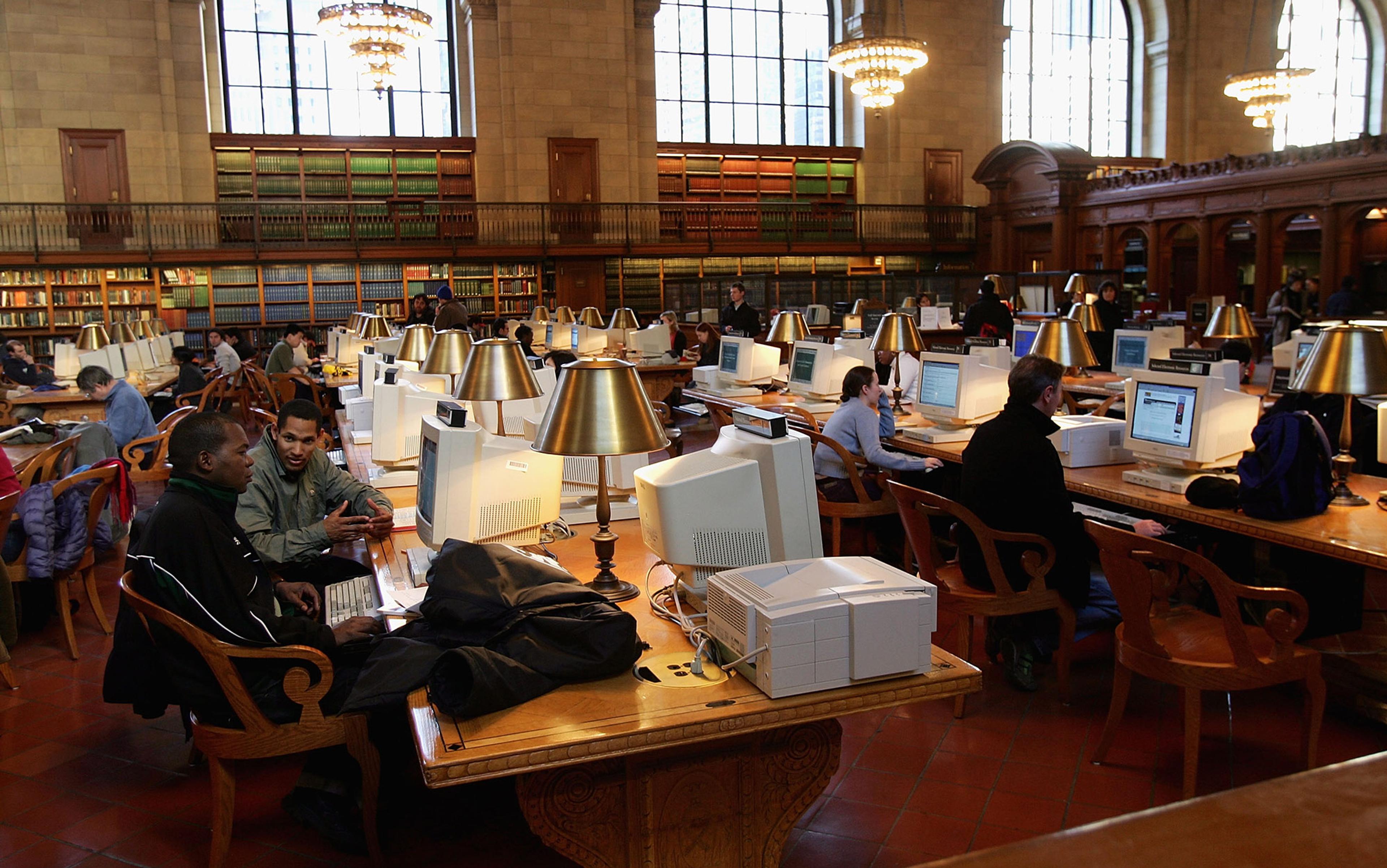Back in the 1970s, my brother and I shared a cabin aboard a space cruiser. Dominated by a sturdy bunk bed, it was roughly four by four metres square with a porthole at one end and an airlock at the other. Our little cabin was wonderfully hermetic: it contained all necessary life support systems — a plastic bottle to pee in, rubberised garden gloves for spacewalks — and even advanced communications technology in the form of a chunky transistor radio, whose terrestrial signals we tried our best to ignore. Occasionally our cruiser morphed into a planetary outpost, its precise location varying according to star date. In winter, we gazed upon the snow-blown wastelands of the ice planet Hoth. In the heat of midsummer, our air-conditioned outpost sat coolly on the scorched plains of Tatooine, or a high, wind-blasted ridge on Vulcan.
To be a child of the 1970s was to fantasise not merely about travelling in space but also about living there, permanently. This was the era of Salyut and Skylab, humanity’s first orbiting residences. In the space of a decade, humankind had progressed from the occasional, furtive dash beyond the blue to more extended stays in orbit. By the end of the 1970s, both Mir and the International Space Station (ISS), existed in prototype. Meanwhile, space agencies were busy planning more ambitious cosmic habitats, such as inflatable lunar cities and modular Martian towns. Millions of dollars were poured into planning and testing these and other futuristic space abodes.
Forty years on, we find ourselves at a crossroads when it comes to living in space. Right now, there are four space stations in orbit: the ISS, whose six-person crew occupies the habitable volume of a five-bedroom family home; a tiny but growing Chinese space lab called Tiangong-1; and two un-crewed inflatable stations — each the size of a small caravan — owned and operated by the Nevada-based Bigelow Aerospace Corporation. Another Bigelow module might soon link up temporarily to the ISS — a small expansion of our habitable real estate in the vacuum.
The business of getting people to and from orbital space is now largely routine, thanks in no small part to the retirement of the accident-prone Space Shuttle and a greater reliance on sturdier rocket-and-capsule technology. New entrepreneurial companies such as California’s SpaceX and XCOR are also bringing costs down by introducing market efficiencies to an industry historically driven by quasi-governmental sinecures.
Many happy billions of dollars are there to be made in the human spaceflight business
Space tourism, driven by ‘astropreneurs’ such as Virgin Galactic’s Richard Branson, will soon add hundreds of wealthy people to the astronaut ranks, but only for brief sojourns: they’ll reach suborbital space for a few quick minutes before returning to the atmosphere. Eventually, those high-paying tourists might want to stay awhile; Bigelow Aerospace has made no secret that its inflatables would be ideal for such a purpose, and the ISS has already hosted several tourists. Study upon study has indicated that many happy billions of dollars are there to be made in the human spaceflight business, which includes not just space labs, stations and hotels but also outposts on the moon and beyond.
Space futurists — many of whom I count as friends — can finally, and with some measure of reality, lay claim to the idea that we are on the verge of fulfilling the philosophical promise of the Space Age and becoming what the SpaceX founder Elon Musk describes as ‘a multi-planet species’. Certainly, it has taken longer than they’d hoped: the pace of the Apollo years was unsustainable, being largely fuelled by the geopolitics of the Cold War, and space bureaucracies have been slow to take advantage of entrepreneurial efficiencies. Space futurists argue that things are changing. They insist that a new Space Age is dawning. But what if the signs they see are only the last wispy auroras of the first one?
Whether launched for profit or pride, the ISS, Bigelow Aerospace and Chinese space stations are artifacts of a particular cultural moment, when living in space was thought to be the next step in humankind’s evolution. Space had become more than an ocean to traverse, pace Kennedy. It had become, in that iconic Star Trek phrase, ‘the final frontier’.
I am as big a Star Trek fan as anyone, but I fear the frontier analogy misses the mark. On the frontier of old, one expected to find a better version of the world left behind: more land, more resources, more possibility. But the more we learn about ‘space’, the more we understand that living there would mean being forever enswathed in a portable bubble of Earth, with the goal being merely to survive. Even in the heady 1970s, my brother and I were keenly aware of this imperative: we spent most of our time aboard the space cruiser checking its equipment, its stocks of tubed food-paste and canisters of fuel, and of course air. Always and forever, air.
The dream of living in space was more about Utopia than utility
With our dependence on sat-nav, mobile phones, satellite-based weather prediction and other essentials of 21st-century life, one might conclude that our lives are more entangled with space than ever. But this dependency is rather different from the dream of living in space, which was more about Utopia than utility. While I would still happily squeeze myself into an orbiting tin can (or inflatable habitat), I remain in a minority whose size and demographic has not changed meaningfully since my boyhood. The bulk of humankind doesn’t see its future as inexorably linked to leaving the planet. Outside of hardcore space enthusiasts, we as a species feel more Earthbound than at any point since the earliest days of the Space Age. So what happened? Where did our collective childhood dreams of a life spent exploring the universe go?
The imaginary cosmic outpost my brother and I shared was informed by very specific design constructs. We had a clear idea of its basic configuration: airlock, porthole, and a dazzling array of controls for weapons, robotics, and in-flight operations, which were made of Lego bricks, cardboard, and the odd spare coat button taped to a desk. There was also an understood aesthetic: it had to be tidy, nothing out of place, everything precisely to hand. Our interplanetary voyages were perhaps the only occasions that voluntarily moved us to clean our room. In space, no one wants to see your clutter.

Most of these ideas about the architecture and aesthetics of space habitats were drip-fed via a symbiotic relationship between fiction and reality. They are still with us. Space habitats, whether free-floating or on planetary surfaces, are still portrayed as ascetic environments crammed with technology, their interior surfaces a landscape of pre-moulded plastic or metal. They are not spaces in which to luxuriate or play, but are functional to the point of spartan severity.
This was not always the case. Writing in the early 20th century, the Russian scientist and space futurist Konstantin Tsiolkovsky described free-floating ‘space islands’ that were lush, self-sustaining communities not unlike a utopian collective farm. In the 1970s, the late American physicist Gerard O’Neill elaborated on this idea, proposing massive cylindrical colonies located at a gravitationally stable point between the Earth and the moon. Twenty miles long and five miles wide, O’Neill’s habitats would house thousands of people; constant rotation of the cylinders would provide Earth-like gravity. ‘With an abundance of food and clean electrical energy, controlled climates and temperate weather, living conditions in the colonies should be much more pleasant than in most places on Earth,’ O’Neill wrote in 1974.
I had a chance to clamber inside a full-scale training mock-up of the Mir space station. The experience was like residing inside a computer terminal
And yet, even in 1974, O’Neill was fighting a popular tide that had begun to battle such spacefaring optimism. Beyond the steady churn of futuristic imaginings, whether from O’Neill or NASA or science fiction writers such as Arthur C Clarke, the edifying promise of human space travel was quickly fading. The ‘space race’ might have been the most benign aspect of the Cold War, but the exploits of Yuri Gagarin, Neil Armstrong et al hardly resolved the conflict. Nor had space technology solved other Earthly challenges, as many had been led to believe it might (not least by NASA and its supporters). If anything, by the early 1970s, space-driven futurism and its quick-fix buoyancy seemed to magnify, even refract, the real world: its wars, its poverties, its growing environmental challenges. Within the course of a generation, the perception of living in space had swung wildly from Utopia to dystopia, and nowhere was this more evident than at the movies.
The 1970s and early ’80s were arguably the golden era of science fiction filmmaking, and many of these films solidified in the popular conscience a darker view of life in space, a kind of cultural backlash against the shiny optimism of those earlier Space Age ideas. The Edenic space station in the 1972 film Silent Running isn’t an O’Neillian paradise but rather a grim ecological ark holding the last remnants of Earthly plant and animal life, the rest having been destroyed by human-made ecological carelessness. Sci-fi films of that era also changed our aesthetic perception of space living. Alien (1979) and Blade Runner (1982) popularised a visual idea that the filmmaker James Cameron calls ‘used future’, in which the interiors of spacecraft and outposts are dank, greasy, careworn and, unlike my bedroom cruiser, rather messy. Perceptions of human relationships in space changed, too: even before the acid-blooded aliens came along, it was a dull, bickering life aboard Alien’s spacecraft Nostromo, which looked less like a spaceship than an outsized auto-repair shop.
The 1984 Peter Hyams film 2010, the follow-up to Stanley Kubrick’s gleamingly iconic 2001: A Space Odyssey (1968), was likewise gloomier in its visual and emotional palate. Far from enjoying Kubrick’s sleek Pan Am space cruisers and waltz-powered space wheels, Hyams’s travellers (those who’d survived: several had died in cryogenic suspension) inhabited a ship so dimly lit that it makes it a struggle for viewers to actually see what’s going on. There is also a pervading sense of loneliness in the film, and more focus on inter-crew conflict; 2010 traffics in far muddier notions about human nature and its place in the cosmic order than its predecessor.
Ironically, our actual experiments in space living have largely reinforced this stark perspective. Real life in space is often cramped, unpleasant and even pointless. Some years back, I visited Star City near Moscow, the training centre for cosmonauts since Gagarin, where I had a chance to clamber inside a full-scale training mock-up of the Mir space station. The experience was more like residing inside a computer terminal than one of O’Neill’s cylindrical islands, so proximate and abundant were tubes, wires, levers, buttons and unnameable gadgets.
More disorienting was the placement of controls and conveniences: because space was limited, these were distributed throughout the station without reference to Earthly gravity, thus making use of ‘ceilings’ as sleeping quarters, walls for toilet cubicles and virtually any other surface for any other activity. One could get used to such things (and you’d have to be a true cynic to tire of the view outside your window). But it’s a far, far cry from strolling the wide corridors of the Starship Enterprise.
As with Mir before it, occupants of the International Space Station must undergo a battery of psychological tests to ensure they can get along without incident, given that they are crammed together for months on end in an isolated house they can’t leave (not unlike the TV contestants on Big Brother, surely an unsung living-in-space spin-off). The ISS is easily the roomiest extra-terrestrial dwelling yet built, but it offers a bare minimum of privacy: the NASA astronaut Sunita Williams described her sleep/work quarters on the ISS as being ‘like a little phone booth’.
Most of what we have learned about living in space is that we should not live in space. We are designed for gravity; without it, strange things happen to both body and mind. For each month spent in space, humans can lose up to two per cent of their bone mass. This means that each day, for hours on end, the ISS becomes the world’s highest-flying gym to keep its occupants fit. But even with such precautions, some returning space travellers require months of rehabilitation to readjust to life on Earth. Others, despite having access to the best facilities and treatments available, experience headaches, sight loss, and undiagnosed physical and psychological frailty for the rest of their lives.
But these are mere hardships, not showstoppers, and those who’ve pioneered at the edges of human experience have always managed to endure them. Physiological challenges aside, life aboard the ISS is not unlike life on a submarine or in an Antarctic research station: isolated, cramped, and relentlessly task-focused. ‘But,’ the space futurist will say, ‘who is to say these limitations are permanent?’ After all, we might one day be able to create artificial gravity, which would significantly minimise the damage done to the human body in space. We might one day be able to build, launch and populate some version of the floating paradise envisioned by Tsiolkovsky and O’Neill, giving us greenery and companionship in space — and some measure of Earthly elbow room.
‘One day’ is the sustaining trope of today’s astropreneurs, and it is mother’s milk to the clever engineers and researchers at NASA and the European Space Agency, who continue to churn out studies and CGI animations pushing, ever pushing, for a humans-in-space future. One day, anything is possible: science and science fiction, hand in hand, have conspired to make us believe this is true. One day, living in space might be as easy as living on Earth.
But will it matter to anyone? That we might be able to live in space does not mean that we still want to, or that the arguments put forward for doing so will still resonate across the cultural landscape. Indeed, a closer look at the four space stations now in orbit reveals that the living-in-space dream is, in fact, in serious trouble.
Space, as we understand it, is tabula rasa in its purest form: no life to trample upon, no natives to displace, no border disputes to wrangle over
No amount of spin can mask the incredible expense of the International Space Station, which has thus far cost an estimated $150 billion to build and operate. For that price, NASA could build, launch and operate several dozen Mars Curiosity rovers. The station’s scientific value is routinely criticised as being paltry, particularly when compared with other high-end science projects such the Large Hadron Collider, which was built for about $10 billion, less than a tenth of the price of the ISS. The ISS is routinely promoted as a stellar example of cross-cultural collaboration, but it’s unclear whether the multi-national consortium that runs it will keep it operating past 2020.
China’s ultimate aims for its spaceflight programme are the subject of constant speculation. The country has lately pursued an ambitious manned space programme, but only because it understands that manned spaceflight is a status marker among superpowers. How long will it be before other ‘status markers’ of China’s global rise — its mega-cities, its growing military machine, its tourism, the growing ‘soft power’ of corporate tech brands such as Huawei — supersede the importance of human spaceflight?
That leaves the entrepreneurs. Along with SpaceX and Virgin Galactic, Bigelow Aerospace is one of the forerunners of the entrepreneurial space sector, upon which off-world enthusiasts pin their hopes. The American hotel magnate Robert Bigelow has so far bankrolled the company with a reported $250 million, and he is on record as committing to another quarter-billion through 2015. At that point, presumably, he hopes the company will begin turning a profit.
In 2007, around the time it launched its second unmanned station, Bigelow Aerospace boasted that as many 800 paying crewmembers could be flying in 10 years’ time. Six years later, the number of Bigelow astronauts remains zero. Bigelow has launched ambitious self-funded enterprises before, but he is also known for being capricious with them. In 2004 he pulled the plug on the National Institute for Discovery Science, which funded paranormal research. Bigelow’s pockets might be deep, but no one can fund a business endlessly without any paying customers.
The Space Age dream of extra-terrestrial humanity is at its heart a tautology: we will expand into space because we will — ‘one day’ — be able to expand into space. Yet it is easy to find useful analogies to the contrary. In the 1960s and ’70s there were more than a dozen human habitats — occasionally dubbed ‘inner space’ stations — scattered beneath the world’s oceans. The most famous was Tektite II, launched in 1970 into Great Lameshur Bay in the US Virgin Islands, with an all-female crew of scientists led by the American oceanographer Sylvia Earle.
Like the drive to move into space, sea colonisation was once seen as an essential step in humanity’s future. The undersea world is a better fit for the classic frontier ideal: untapped resources, an abundance of uninhabited space (uninhabited by humans, at least), and with most required habitation technologies fairly well-established by decades of submariners.
But by the 1980s the undersea colonisation movement had largely withered away. The French aquatic explorer Jacques Cousteau, who was instrumental in establishing one of the earliest undersea stations, Conshelf off the coast of Marseilles in 1962, was also among the first to disassociate himself from the colonisation movement, which he said was contrary to the real need for human intervention: conservation. Tektite’s Earle, now explorer-in-residence at National Geographic, travelled much the same trajectory. There are just three operational undersea stations left: two are used for oceanographic research off the coasts of Rhode Island and Florida, while the third is a privately owned underwater hotel in Dubai.
The sea/space analogy isn’t perfect. Space, as we understand it, is tabula rasa in its purest form: no life to trample upon, no natives to displace, no border disputes to wrangle over. Taken on more generous terms, our push to colonise the seas or space might be viewed as a natural expression of the human need to expand and explore. But we are now more self-conscious, and less hubristic, about what such expansion might bring. The more we understand our own impact on Earth, the less we seem inclined to inflict it elsewhere.
There might be arguments for living in space that resonate more fully with the concerns of our time. The explosion of a meteor over Russia this February has placed new emphasis on the early detection of stellar objects that threaten to collide with Earth: could human-tended stations or bases be part of the solution? It is unfortunate that suborbital civilian spaceflight has thus far been branded with the ‘tourism’ label, which diminishes its potential to embrace a wider audience. As it stands, civilian spaceflight is largely perceived as what wealthy individuals do when they’ve climbed Everest and want a bigger trophy. It’s understandable that companies such as Virgin Galactic and XCOR want to monetise their work, but they also need to demonstrate the potential for suborbital spaceflight to be meaningful, which means opening up a few seats for the hoi polloi. Transitioning human spaceflight from a military elite to a wealthy elite would hardly be progress.
There might also be resonance in applying the technological and psychological lessons of living in space to the challenges of living on an increasingly crowded Earth. The potential synergy between the design requirements of close living in space and close living on Earth could use more attention. Space Age buildings such as the Nakagin Capsule Tower in Tokyo — built in 1972, and so retro-futuristic as to appear to be CGI — are more about form than function. Perhaps architects and urban planners should be offered berths aboard the ISS or Bigelow’s inflatable habitats.
Our drive to live in space has to serve human needs, not human fantasies. Since the days of my childhood space cruiser we have become, by and large, a more self-aware species. Maybe that’s a necessary first step towards a meaningful spacefaring future. Step two will be harder. The next Space Age will require more than humane starships and flashy technologies — more than roomier bunk beds and better rocket fuels. It will take new ideas that are compelling enough to convince us that this wonderful planet of ours isn’t the endpoint of human evolution, but just the beginning.






